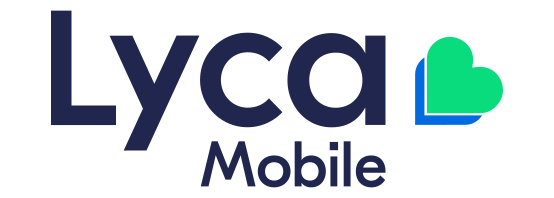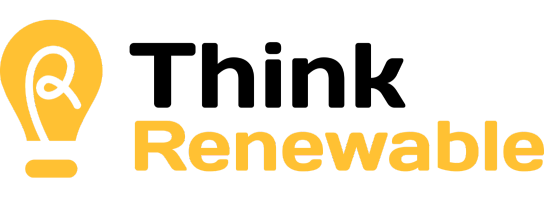By Emily McLeod, WOW Recruitment
•
September 11, 2024
The best talent in your industry might not be actively searching for a job, but that doesn’t mean they wouldn’t be interested in an opening at your organisation. After all, an opportunity’s an opportunity. This type of candidate search is called ‘passive recruitment’, and it differs pretty heavily from the more well-known ‘active recruitment’. Let’s talk about how they differ, and strategies to attract the best passive talent. Recruiting active vs. passive job candidates Who are active candidates? Active candidates are your classic job seekers. They already know they’re interested in another role, and are actively searching for a new employer. An active recruitment strategy is the common approach: writing job ads, posting them online and vetting candidates who apply. Who are passive candidates? Passive job seekers are candidates who don’t know that they’re candidates. They aren’t actively searching for a new role, and could be quite happy at their current employer. Still, for the right offer they might consider hopping over to your team. A passive recruitment strategy is proactive and slightly more challenging. It’s more of a head-hunting approach, identifying right-fit candidates from across the industry and building relationships with them over time. Many recruiters nurture these relationships even when there are no active job openings, just to stay in people's minds. Then, when a role eventually opens up, half the work is already done. The benefits of recruiting passive candidates Pitching your open role to a passive candidate might seem like a tricky sell, but there are a lot of benefits to finding these talented professionals – often outweighing the extra effort. Gain access to the best talent. Sticking to active recruitment can mean recruiting with blinders on, seeing only the people who are on the hunt. Broadening your search allows you to more accurately target right-fit professionals who you know are highly employable – after all, they are already employed! Reduce time-to-hire. When passive recruitment is done proactively, it may be quicker to fill openings with this strategy; by the time you need someone, you already have a number of prospective candidates sourced and nurtured. Less worker misrepresentation. Taking time to source ideal people ensures you already know a lot about them by the time they come to apply. This can lead to less worker misrepresentation, where people aren’t what their CV says they are. Lower competition. Active job seekers usually apply for multiple jobs at once. Meanwhile, passive job seekers aren’t on the market at all, so you may be the only one talking to them – reducing competition for their skills. Simple strategies to win passive talent 1. Brainstorm your perfect candidate Before starting the passive recruitment process, brainstorm who you actually want to find. This is a goal-setting exercise, giving you a ‘persona’ to target and an objective to measure success against. Some steps to consider: Identify current and future needs within the organisation, to better understand what skills gaps you'll be filling. Ensure you have a complete understanding of the job description, and all the necessary skills and qualifications. Build a persona which outlines the likely demographics, qualifications and other key features of the most likely candidates for any applicable roles. Who they are, where they work, what they know, their preferred salary, industry pain points... all of this may be relevant later. Gain buy-in (and sign-off) from relevant stakeholders within your business, especially whichever team leader is likely to manage this new hire. This will help ensure you’ve got all your details correct. 2. Strengthen your employer brand Your employer brand is your culture, values and mission, value proposition, and reputation. A strong employer brand is instantly recognisable, where professionals in your sector know your business to be a great place to work. The stronger the brand, the wider this reputation spreads. Having a strong employer brand is essential in passive recruitment, as right-fit candidates may engage with your brand long before you ever reach out to them – through your content, social media presence, events presence or word of mouth. If this contact has been positive, they may already have a high opinion of your organisation when you engage them for the first time. Learn more: How to Build an Authentic and Appealing Employer Image 3. Conduct a thorough candidate discovery process Finding right-fit passive candidates goes well beyond job boards. You’re looking for the perfect match, someone to engage and build a relationship with over time, and they might be hanging out in one of a few different places. These are some examples of common sources successful passive recruiters have used in the past to find and engage with the best passive talent. How many are already on your mind? Social media platforms (LinkedIn especially) Industry networking events Relevant online communities (i.e. forums, chat groups and other relevant websites) Industry magazines, blogs and publications, looking for interesting guest writers Company alumni (who can you win back?) Referrals from current employees, industry peers or company alumni Talent from previous hiring initiatives who are still in your database Universities and other relevant colleges, if appropriate for the role The persona(s) you created in step one should help you narrow down your search, and give you a benchmark to measure potential talent against. 4. Reach out and make contact It's most common to reach out to passive candidates via email or social media DM. Of course, if you’re on a mutual online community you might spark up conversation there or introduce yourself at an industry event. Tips to consider when reaching out to passive candidates: Always get to the point. Long-winded introductions are often ignored by busy professionals. Offer a clear value proposition. Focus on value during your pitch. You need to offer something that they don’t have in their current employment, otherwise they won’t see a benefit in jumping ship. We’ll come back to this in point five below. Try to build a rapport. This isn’t a job ad, it’s a blind date. Spark up conversation, keep things moving. This is an ideal opportunity to learn more about the candidate – we'll talk about that below too. Tailor every message. Always tailor your outreach to the platform and person. Mass emails might look like spam. Ask them for a response, even if they aren’t interested. We know they aren’t actively looking for a job, but we can still get a conversation flowing to learn more about them. Alternatively, they might be able to refer you to a trusted colleague who is ready, and who may make a similarly great candidate. 5. Build a relationship with each candidate A good relationship with passive candidates is crucial to earning their trust and, in future, winning their application. This isn't a transactional thing, it’s two people dating, vibing each other out, seeing what the other person is about. Is your opportunity as good as their current one? Is it better? Can they trust you? These are the questions going through their mind. Keep things simple at first, and work your way up You might not pitch an opportunity straight away, instead focusing on dialogue and building the relationship for the relationship’s sake – that’s the proactive part of this we mentioned earlier. Act fast if they show interest Passive candidates can get second thoughts, or waiver and lose interest. Ensure you get them an interview with the right stakeholders as promptly as possible if they show interest, putting some faces to names and offering more of your value proposition to the candidate. Remember, the more you can learn about them the better If you get more information, you might learn more about what they dislike in their current role, or what they’re looking for in a possible new one. This will help you position your company as having the thing that they don’t have, but want. Finally, always respect their time People are busy, and their time is precious. We can empathise with that by keeping things concise, being clear and never pushing someone beyond their comfort level. Even if a candidate is interested, they might not be available yet, and we have to recognise that in order to win them over time. Empathy is never a bad strategy in recruitment! Need help? Call us Passive recruitment can yield excellent results, but it isn’t as simple as active recruitment. That's where you need a dedicated recruitment professional in your corner, helping you with the tricky stuff so you can focus on interviews and choosing the best from the best. To learn more about how we might be able to help with your hiring needs, contact us today .
















